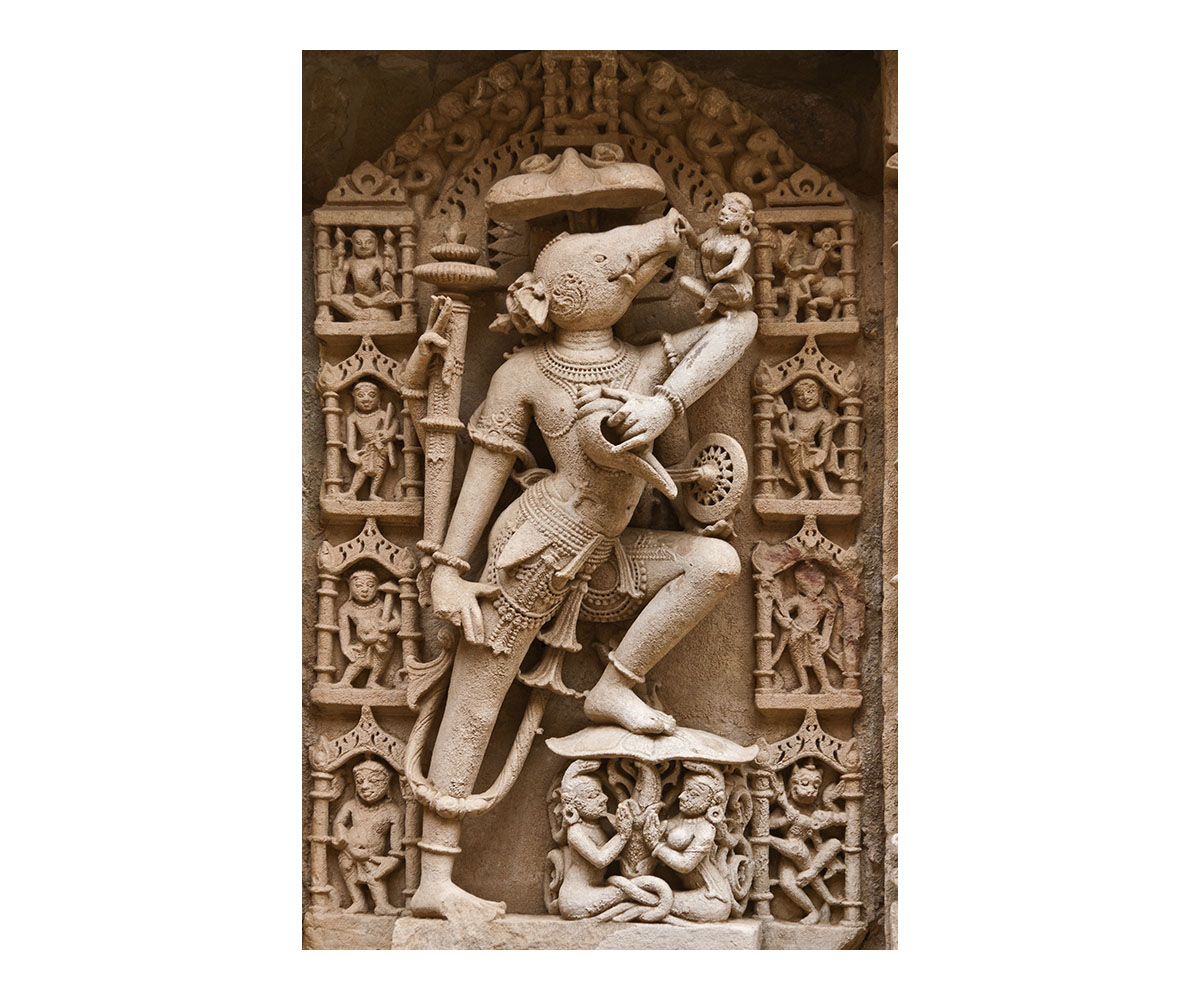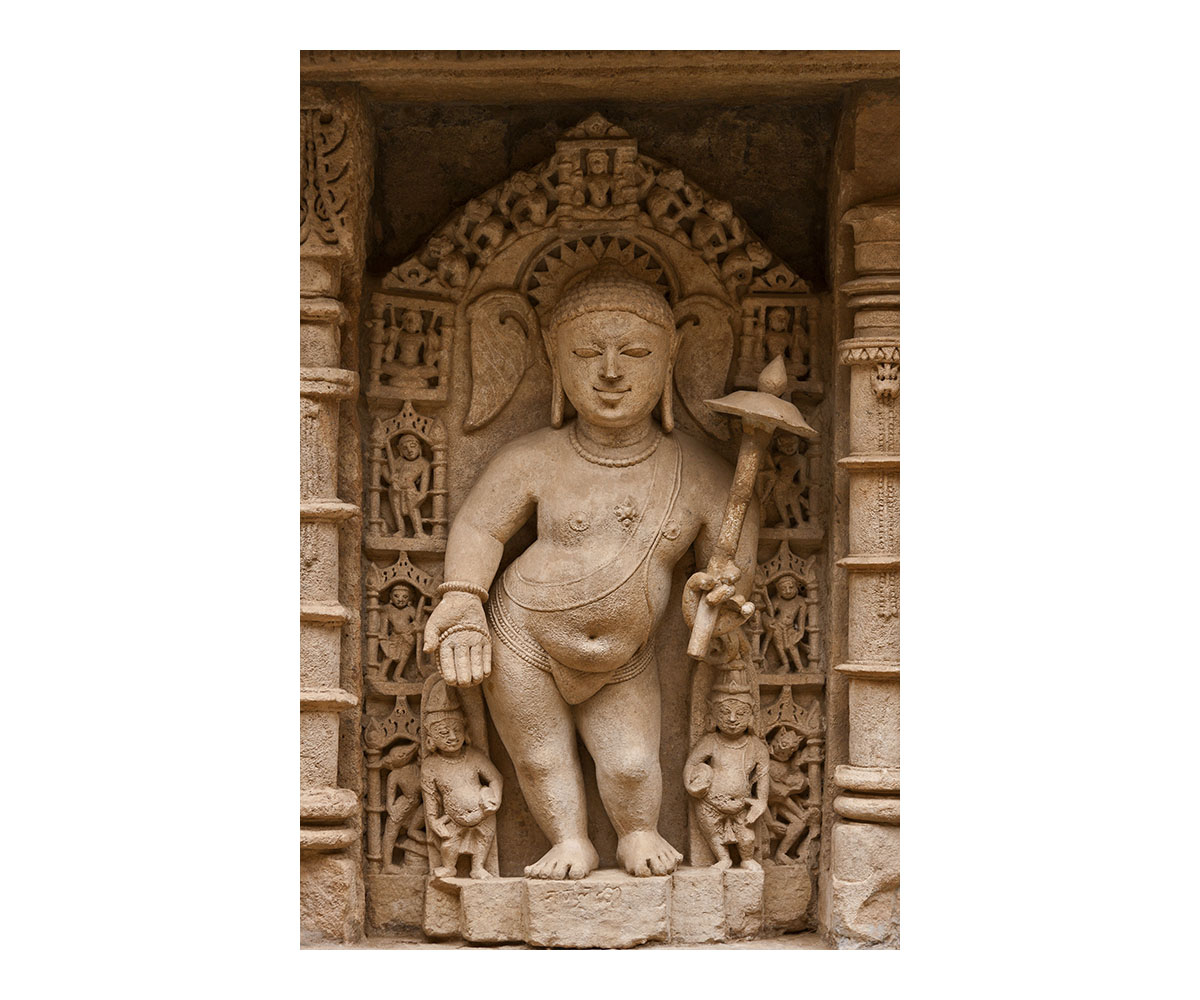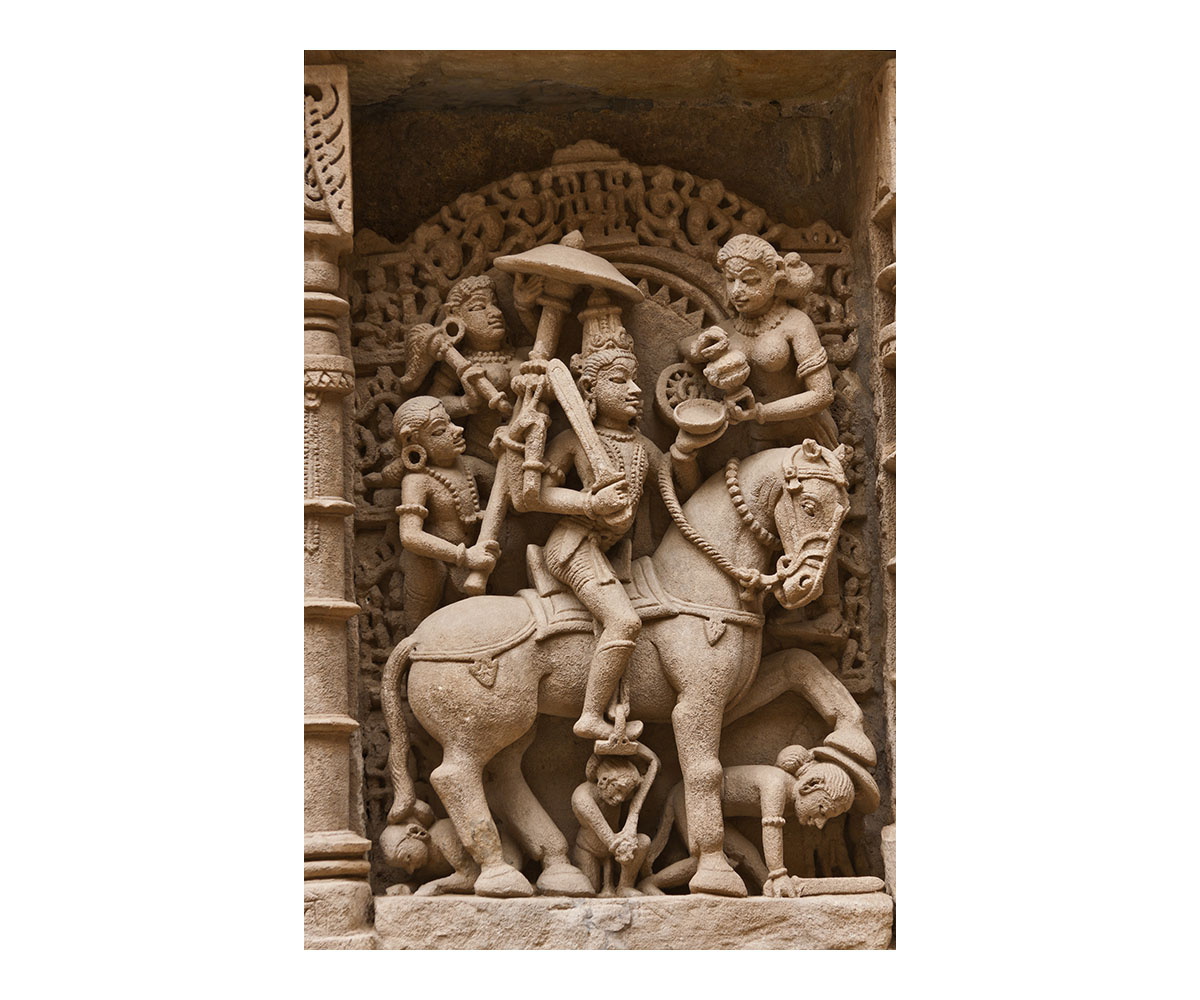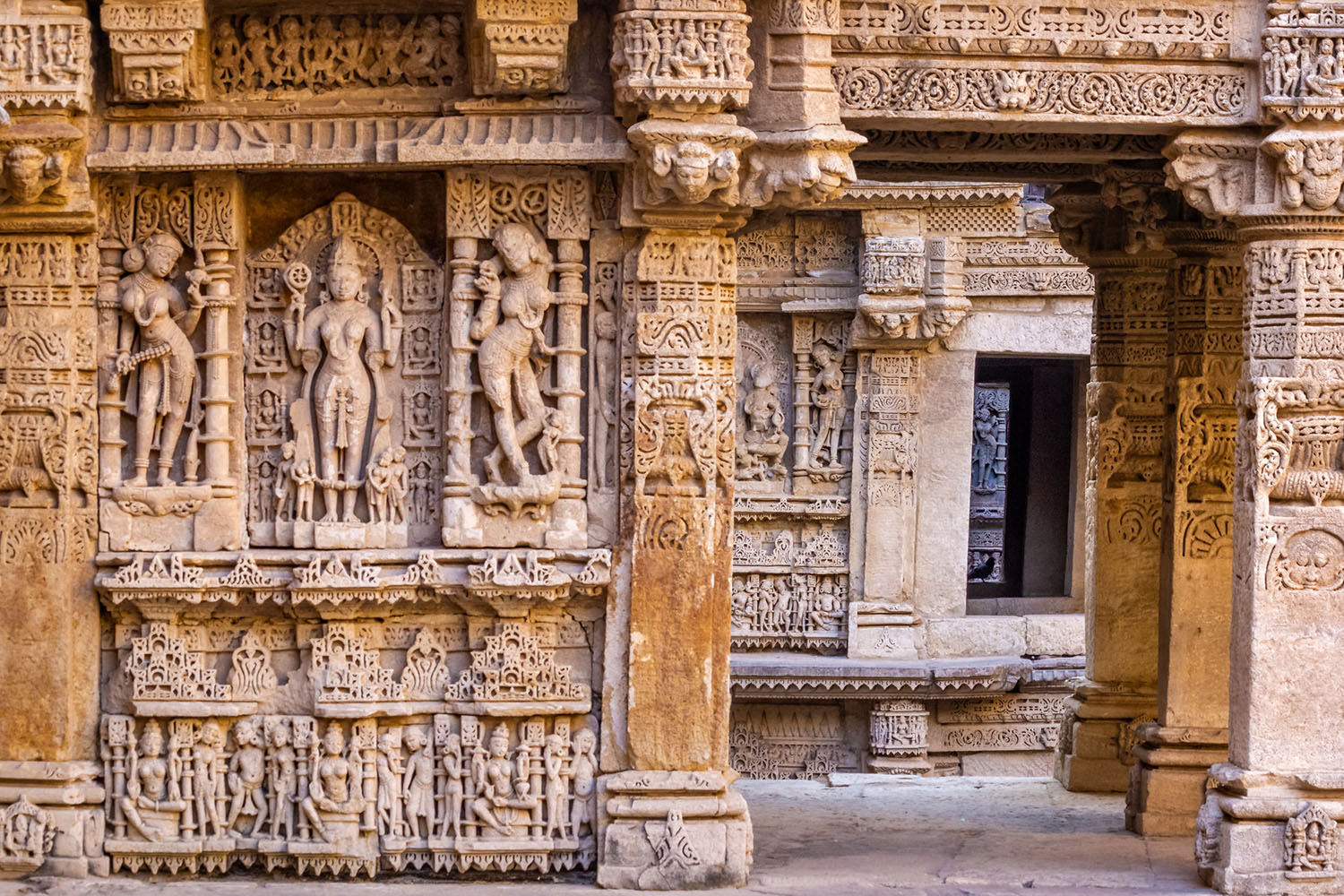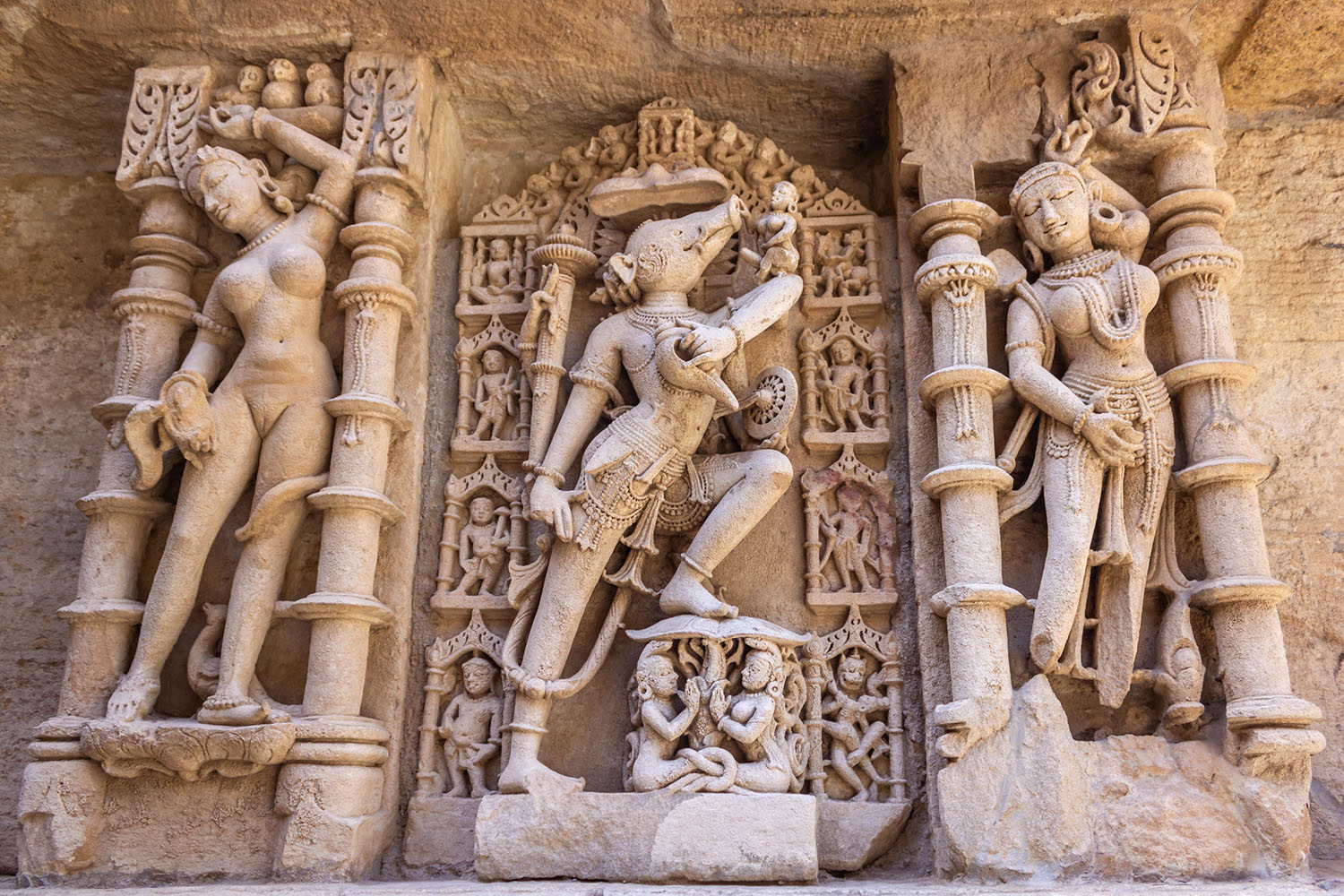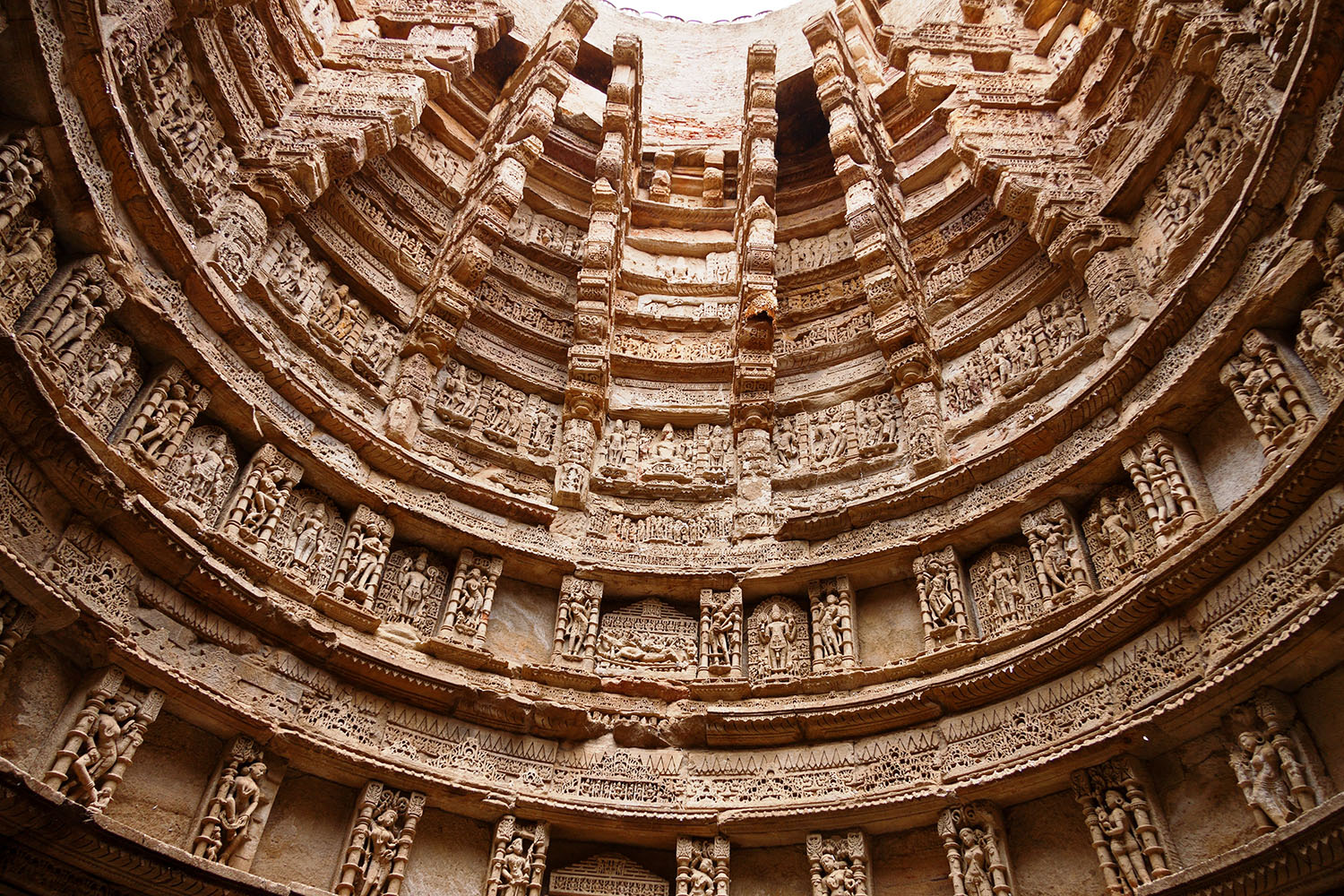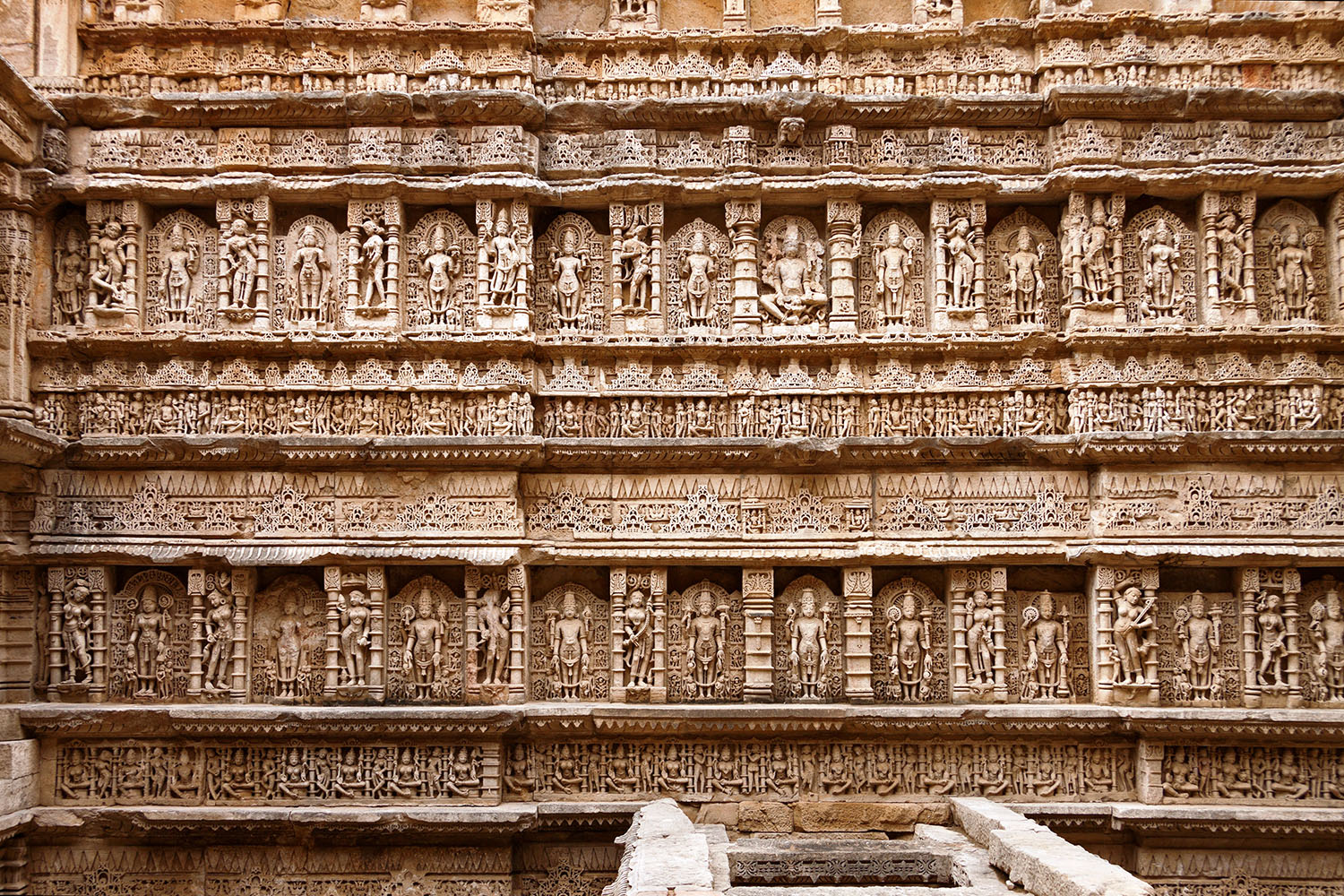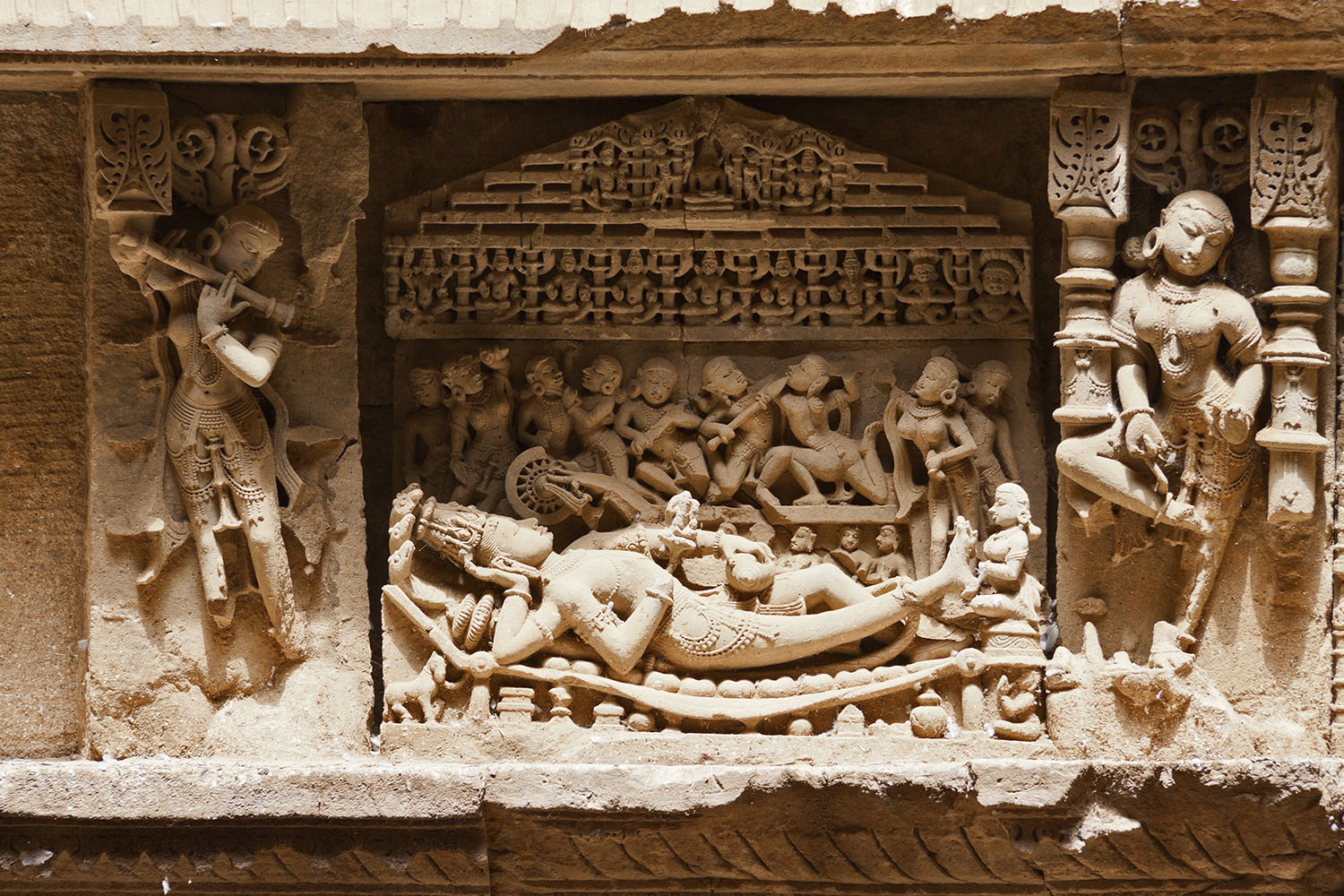ARTICLE
Sculpture at Rani ki Vav
One of the largest Indian stepwells, the Rani ki Vav, or Queen’s Stepwell, was built by queen Udayamati as a memorial to her husband, Bhimadeva I of the Solanki or Chaulukya Dynasty in Patan, Gujarat. The construction of the well was probably completed in 1063 CE, although work may have started as early as 1032 CE; its iconographic programme cemented the strong link between Solanki kingship and various Hindu deities, especially Vishnu.
The step-well is 65 metres long and 20 metres wide. The plan of the space reflected the principles of Hindu cosmogony, and its various intricate carvings are held to suggest a strong familiarity with textile-making traditions.
The sculptures at Rani ki Vav include gods, humans, flora, fauna and animals. In addition to Vishnu and his avatars, they also include Brahma, Shiva, Lakshmi, Sarasvati and Parvati among others. A number of depictions of sacred female forms are present, especially those of Yashoda with the infant Krishna, and goddesses of Shakti cults such as Chamunda, Durga, Mahishashura Mardini, Kshemankari Devi and the Saptamatrikas.
Secular female figures are also positioned in sculptural niches in poses that have been linked to those mentioned in texts like the Natyashastra. Thus, nayikas or heroines are present in several instances, engaged in everyday activities of toilette, writing letters or engaged in devotion. They bear objects such as lamps, conch shells, garlands or fly-whisks. Many of these figures are accompanied by smaller dwarfs or ganas, with whom they are engaged in playful activity. Scholars have also interpreted these female forms as depictions of a variety of social and cultural roles such as that of the goddess, wife, mother, lover, dancer, musician and so on. These depictions tend toward the erotic, especially when paired with snakes, and foreground aspects of older fertility cults with symbols like the Kalpavriksha tree.
A number of secondary figures and motifs are present, such as the kirtimukha, the face of victory, present on the doors of shrines or the shafts of pillars. Many other statues depict animals such as horses, lions and elephants at play. A group of eight Vasus, youthful gods, are also prominently displayed. Corners of the walls are usually installed with statues of dikpalas, regents of the directions. Traces of colour could still be seen on some of the sculptures before restoration, and it is suggested that they were applied originally by painters on a layer of white lime stucco. A marble slab carved with an image identified with Queen Udayamati was also recovered from the site, but scholars date it to a much later period, possibly the thirteenth century CE.
Many of the symbols at Rani ki Vav highlight the importance of water, a crucial resource in a desert environment, linked to fertility myths. The building of a stepwell was also seen as a meritorious religious act, with some scholars describing the complex as an inverted temple. The details of the stepwell’s construction and its dates are derived from historical and literary sources such as the Prabandha Chintamani (The Wishing-Stone of Narratives), authored by Merutungacarya in the fourteenth century CE.
The well, which was built below the ground level, was flooded in by the waters from the river Sarasvati nearby and remained inaccessible for several centuries. Excavations were completed by the Archaeological Survey of India (ASI) in the 1980s, although it is still considerably damaged. Since 2014, it has been deemed a World Heritage Site by UNESCO; it has since been represented on Indian currency notes.
Bibliography
Our website is currently undergoing maintenance and re-design, due to which we have had to take down some of our bibliographies. While these will be re-published shortly, you can request references for specific articles by writing to hellomapacademy@map-india.org.




